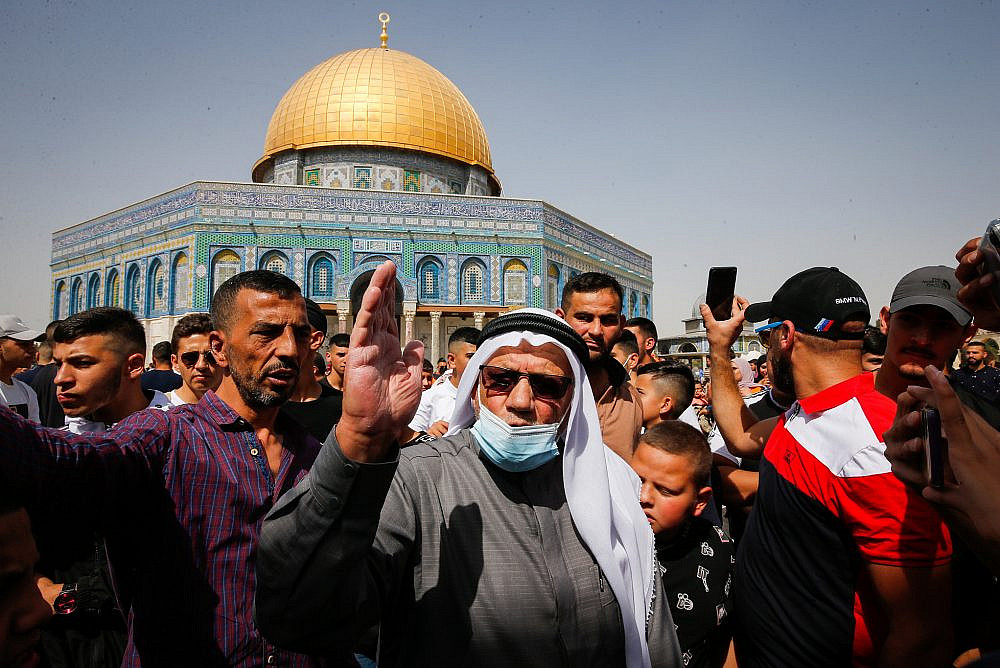It has been 10 months since Donald Trump left the Oval Office and five months since the Bennett-Lapid government was formed. Despite the hype, neither event portended a “brave new dawn” for Israel-Palestine. While some may have anticipated the emergence of a new, more restrained dynamic vis-a-vis Israel’s occupation policies, this has not materialized, and nowhere is it more evident than in Jerusalem.
In the first half of 2021, events in Jerusalem careened out of control. In May, a confluence of radioactive elements in the city — made all the more powerful by the ultimate destabilizer, pervasive hopelessness — triggered the most convulsive round of violence between Israelis and Palestinians in years. The collapse of the status quo on the Temple Mount/Haram al-Sharif, the prospect of large-scale displacement of Palestinians in Sheikh Jarrah and Silwan, and the morphing of the Jerusalem police into a semi-rogue militia targeting Palestinians, conspired to create a “perfect storm.”
While the violence in and from Gaza has abated, Jerusalem has again reasserted its role as the epicenter of the conflict. With so much happening, a stocktaking of these developments are in order.
1. Displacing Palestinians for ‘biblically-inspired’ settlements
Since 1967, Israel has transferred more than 220,000 Israelis to the large settlement neighborhoods of occupied East Jerusalem. With one exception — the razing of the Mughrabi Quarter on June 10, 1967 and the expulsion of its residents on the final day of the Six-Day War — it did so without acts of mass displacement of the city’s Palestinian residents. Rather, the authorities would target specific Palestinian homes coveted by settlers for eviction.
No longer. Today, in two neighborhoods — Sheikh Jarrah and Silwan — the Israeli government is targeting entire Palestinian communities for displacement in ways not witnessed since 1967. All told, thousands of souls are confronting the very real possibility of expulsion.
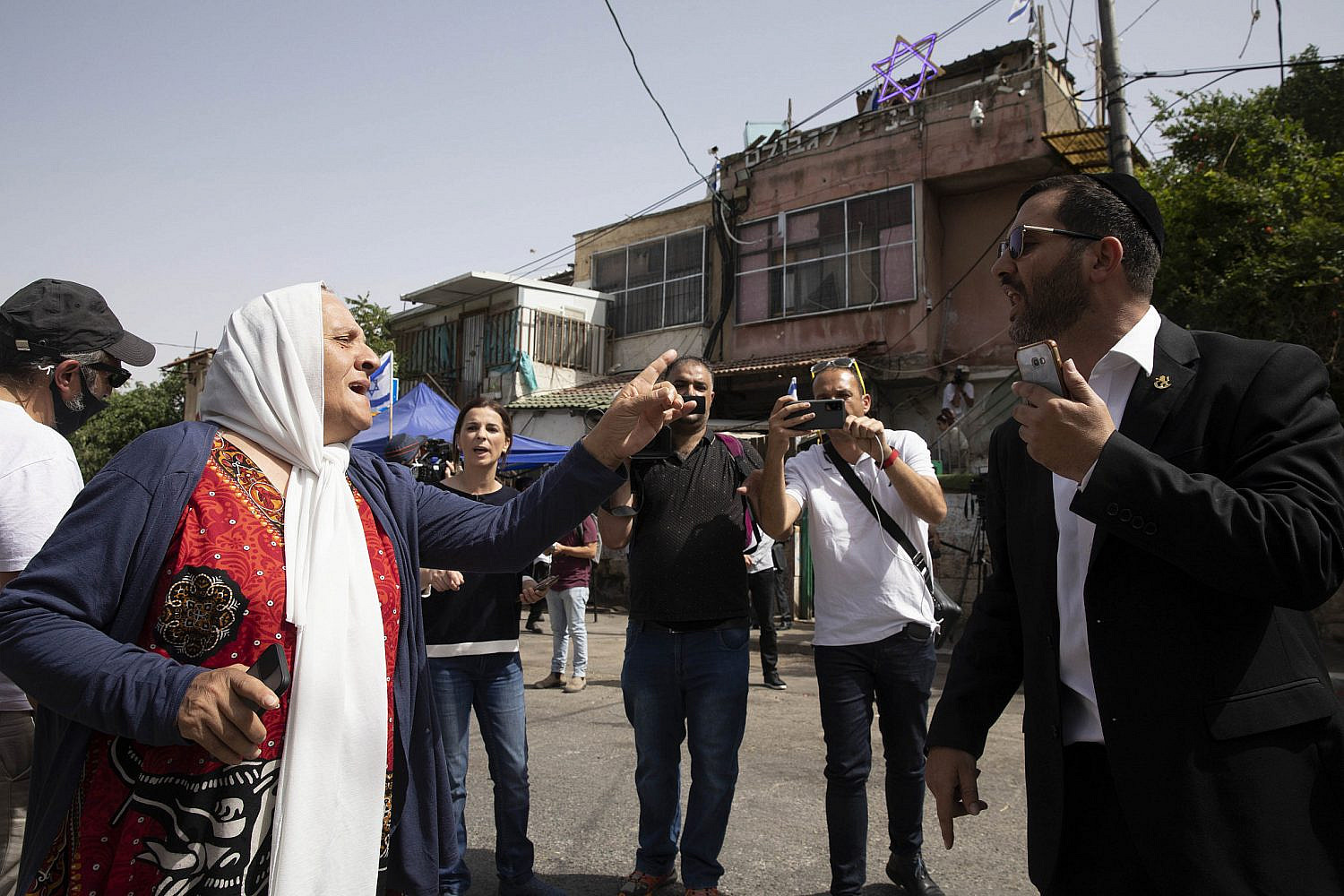
Sheikh Jarrah: Two distinct areas are being targeted in this neighborhood: the Simon HaTzadik compound to the east of Nablus Road, and Umm Haroun to its east.
The first of several pending eviction proceedings is now before the Israeli Supreme Court. On Nov. 2, the Palestinian residents of Sheikh Jarrah rejected a “compromise” proposed by the court, arguing that the arrangement would have made them “‘protected tenants’ at the mercy of settler organizations.” The settlers that are seeking to evict them, meanwhile, attached so many reservations to their acceptance of the proposal that their answer, too, was for all intents and purposes a “no.”
The Supreme Court’s verdict is expected to be handed down before the year’s end. While anticipating the content of future rulings is fraught with dangers and uncertainty, it appears likely that the court will not overrule the rulings made by the lower courts, meaning that the eviction orders will stand. There is no option for further legal appeal.
There are more than 10 other Palestinian households in the Shimon HaTzadik compound for whom this case will likely serve as a non-binding but dangerous precedent. However, the current case is not likely to have a direct influence on dozens of other pending eviction proceedings elsewhere in Sheikh Jarrah.
Silwan: Hundreds of Palestinian residents of the Batan al-Hawa section of Silwan are in proximate danger of expulsion, and the potential demolition of more than 80 Palestinian homes in the al-Bustan area appears to becoming once again a palpable threat.
The Benvenisti Trust, a family endowment founded in 1899, acquired property in Batan al-Hawa in order to house impoverished Yemenite Jews. In recent years, the trust has been taken over by the settlers in Silwan. In eviction proceedings instituted by the trust, the lower courts ruled that they may evict dozens of Palestinian households from their homes. On Oct. 25, the Supreme Court heard arguments in the residents’ appeal of the lower court’s ruling. It is likely that a verdict is forthcoming, although it is possible that the court will schedule an additional hearing. There is currently no indication of what that judgment might be.
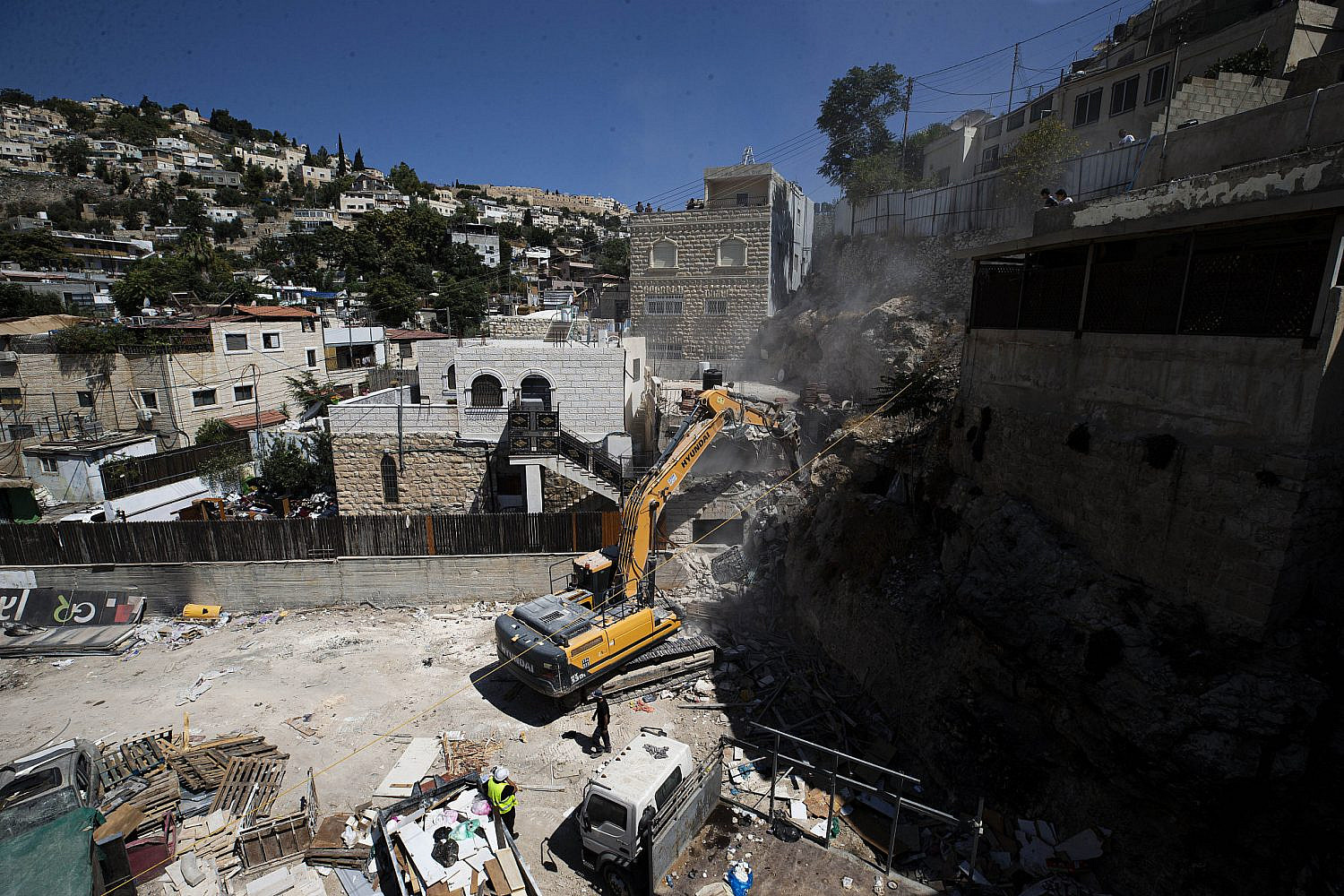
Nestled in the valley between Batan al-Hawa and Wadi Hilweh (City of David) is the al-Bustan quarter, home to approximately 130 Palestinian households. The site has long been targeted by the Jerusalem Municipality and the settlers trying to take over Silwan for a biblically-inspired park dubbed “The King’s Garden.” There are approximately 80 outstanding court judgments allowing the municipality to demolish these homes. Under international pressure, the implementation of these orders has been held for a number of years in order to allow the residents to devise a plan that would leave them in their homes. While the court stay remains valid until February 2022, the municipality has already given notice that it will agree to no further delay and will seek the implementation of the orders.
2. Consolidating an exclusively Israeli Jerusalem with E-1
E-1 is a major settlement planned for a large area of land, 12.5 sq. km in size, and is located between East Jerusalem and the settlement city of Ma’ale Adumim. Due to its strategic location, E-1 has long been considered a “doomsday” settlement with dire consequences for any future political agreement. Firstly, construction of E-1 would detach the Palestinian neighborhoods of East Jerusalem from their environs in the West Bank, exacerbating the fragmentation of the occupied population. Secondly, E-1 would further undermine the possibility of integrating a Palestinian capital in East Jerusalem into a future Palestinian state.
Given the intense and focused international engagement on E-1, no Israeli government over the past 25 years — including Netanyahu’s multiple coalitions — have dared to approve the plan. Until now.
In August 2021, unbeknownst to Prime Minister Naftali Bennett and his cabinet at the time, a sub-committee called the Higher Planning Board of the West Bank, which bears responsibility for the statutory approval of settlement plans, scheduled hearings in anticipation of the final approval of E-1. Since 1996, no forward movement on E-1 could take place without the knowledge and consent of the prime minister; but this fall, the settler-controlled organs of Israel’s occupation took advantage of the fact that the new and inexperienced government was not paying attention. Three hearings on the plan have already taken place, and a final hearing is scheduled for Dec. 13. After the approval of the plan by the Higher Planning Committee, the Defense Minister can officially sign the plan into law. The government has ample opportunity to quietly halt this process, but have elected not to do so.
3. Eroding the Temple Mount/Haram al-Sharif ‘status quo’
There are many, often conflicting, views of what has come to be known as the “status quo” on the Temple Mount/Haram al-Sharif, and many of those opposing views are held in good faith. Yet, there is one, bare-boned definition that is unassailable and incontrovertible. It came from Prime Minister Netanyahu himself: “Muslims pray on the Temple Mount, non-Muslims visit the Temple Mount.”
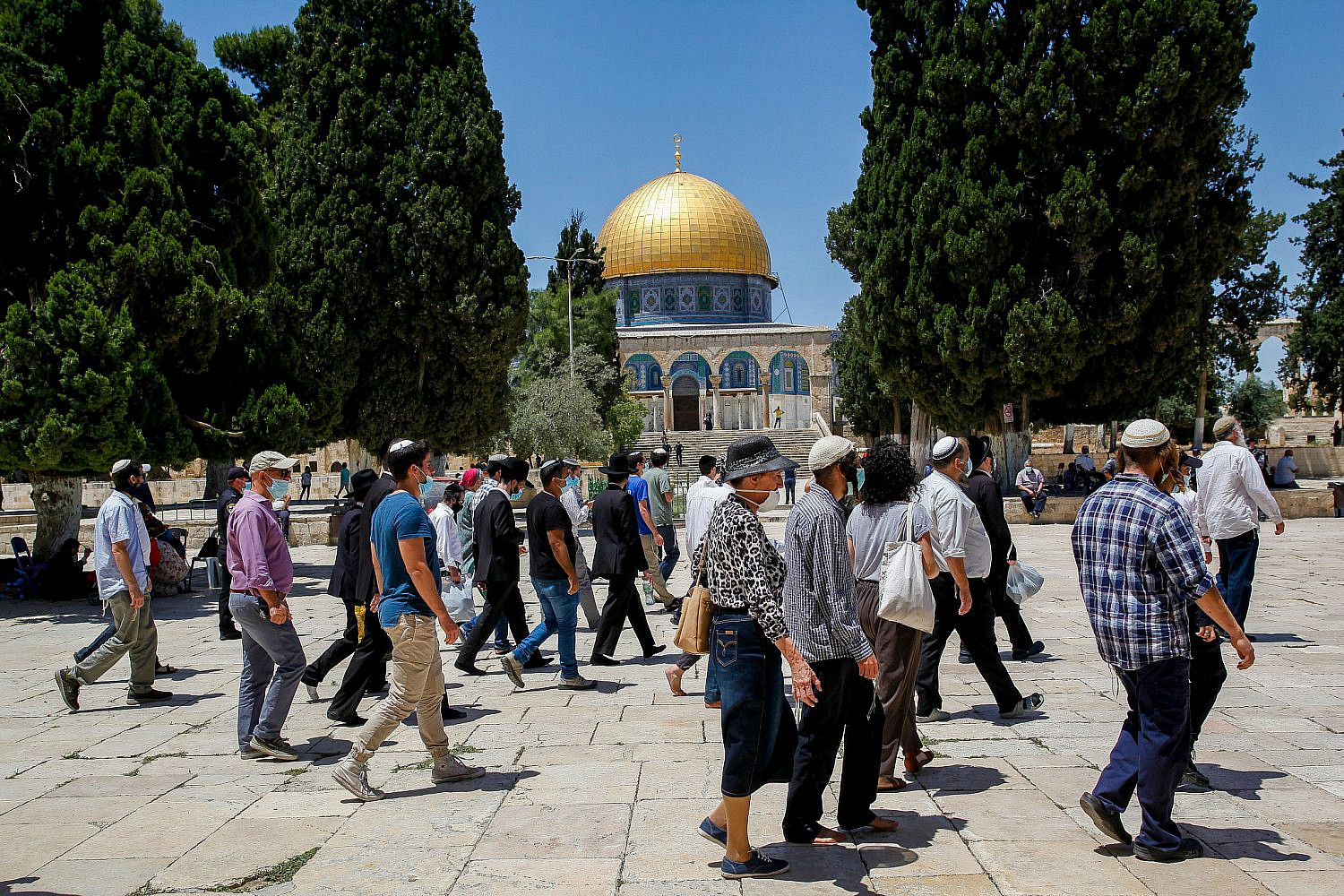
In recent years, there has been a significant erosion of that status quo. Israeli police, which had in the past helped maintain the status quo, have begun in recent years to turn a blind eye to Jewish prayer on the compound, which has become ever more provocative. By the summer of 2021, collective Jewish prayer was demonstrably taking place, and Jewish Temple Mount activists were boasting their achievements from the rooftops.
On Oct. 5, the Jerusalem Magistrates’ Court handed down a ruling which, for all intents and purposes, recognized the legality of Jewish prayer on the Mount. In response, Public Security Minister Omer Bar-Lev announced that “any change in the status quo jeopardizes public safety and could lead to an eruption of violence.” The police appealed the verdict, and it was overturned by the Jerusalem District Court.
At the same time that the Temple Mount activists continue to display an increasingly assertive presence on the Mount, the police appear more willing to enforce the status quo. With these countervailing trends in play, it is safe to say that the final word has not been said.
4. The police’s gratuitous violence
The Israeli police have become notorious throughout the country for their use of unnecessary and excessive force. While Palestinian citizens of Israel have borne most of the brunt for decades, Ethiopian Israelis, ultra-Orthodox Jews, and anti-Netanyahu protesters have experienced that brutality as well.
Nowhere has this been more evident than in occupied East Jerusalem. Almost invariably, protests by Palestinians and their Israeli and international supporters have ended in violence initiated by the police, not by the protestors as the authorities often claim. From Sheikh Jarrah to Silwan to Damascus Gate, the police are effectively operating as a rogue militia that targets Palestinians as “the enemy.”
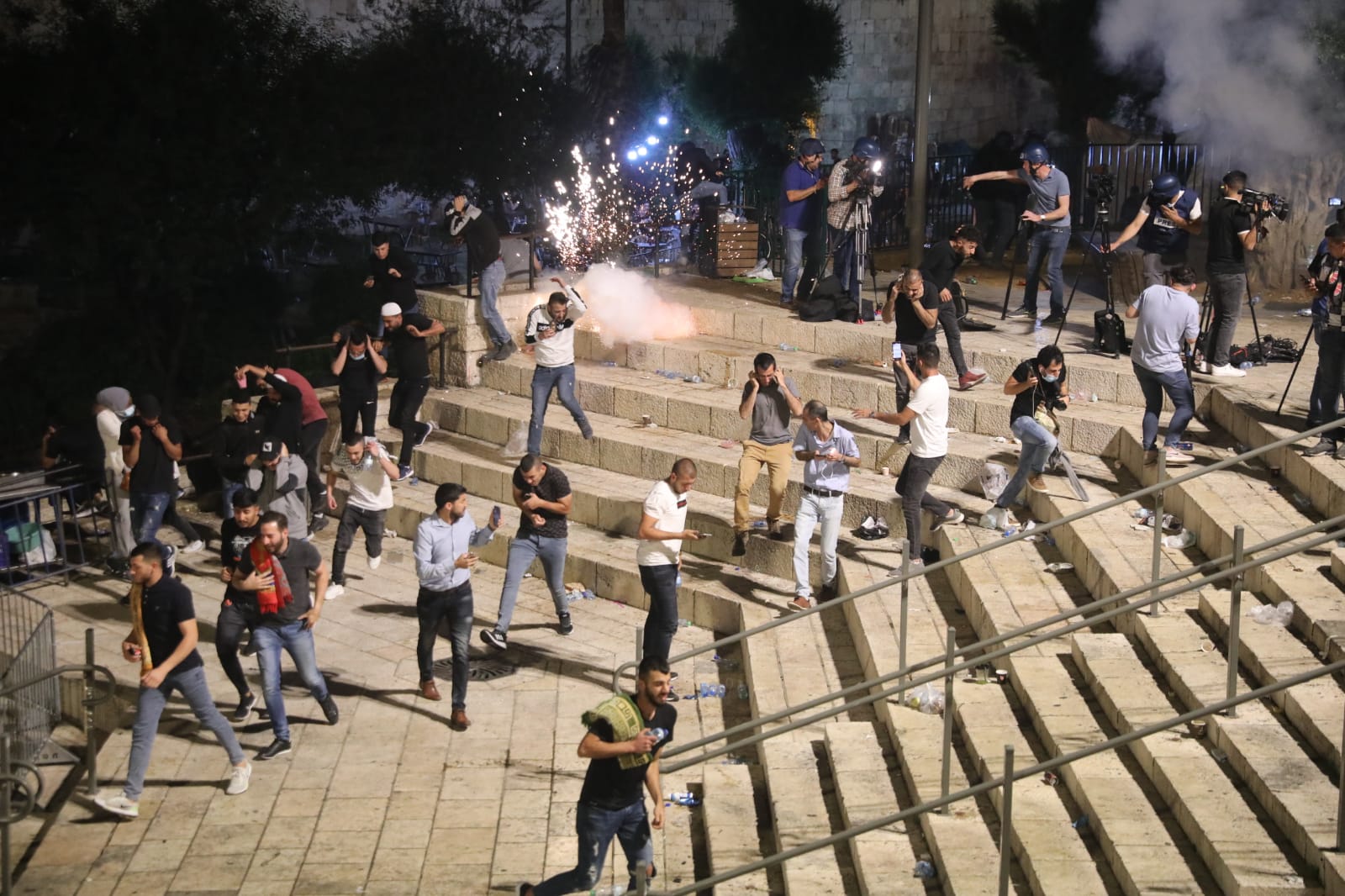
While there appears to be a growing restraint among the Israeli police on the Temple Mount/Haram al Sharif, this hesitant change in behavior has not been extended to Damascus Gate just 450 meters away, or to the rest of East Jerusalem. The gratuitous violence continues.
5. Closing the U.S. consulate to keep the city ‘off the table’
President Trump’s decision in 2019 to shut down the U.S. consulate in Jerusalem, which had been established in 1844, was no mere technical event. By moving the U.S. Embassy from Tel Aviv to Jerusalem and recognizing the city as Israel’s capital, Trump and Netanyahu sent a clear message: Jerusalem is “off the table” and will remain so under exclusive Israeli rule.
If the United States is to fulfill any leadership role on Israel-Palestine, that message must be reversed. The re-opening of the consulate would be perceived as a clear signal from Washington that Jerusalem’s political status will be determined by permanent status negotiations. The credibility of the United States, and of its president, are on the line. Israel rejects that move for precisely the same reason: it would reveal that Jerusalem remains a contested city.
If in the recent past, the issue could have been finessed to a mutually satisfactory conclusion, that is longer the case. Bennett and Lapid have allowed the Israeli right to fetishize the reopening of the consulate, and neither side appears amenable to abandoning their mutually exclusive objectives.
The takeaways
“There is no walking away.” Until May 2021, it appeared that the international community, and most prominently the Biden administration, were seeking to de-prioritize Israel-Palestine to an extent that it could be contained with little or no engagement on their part. But the eruption of violence in May made it clear that there is no walking away from this conflict.
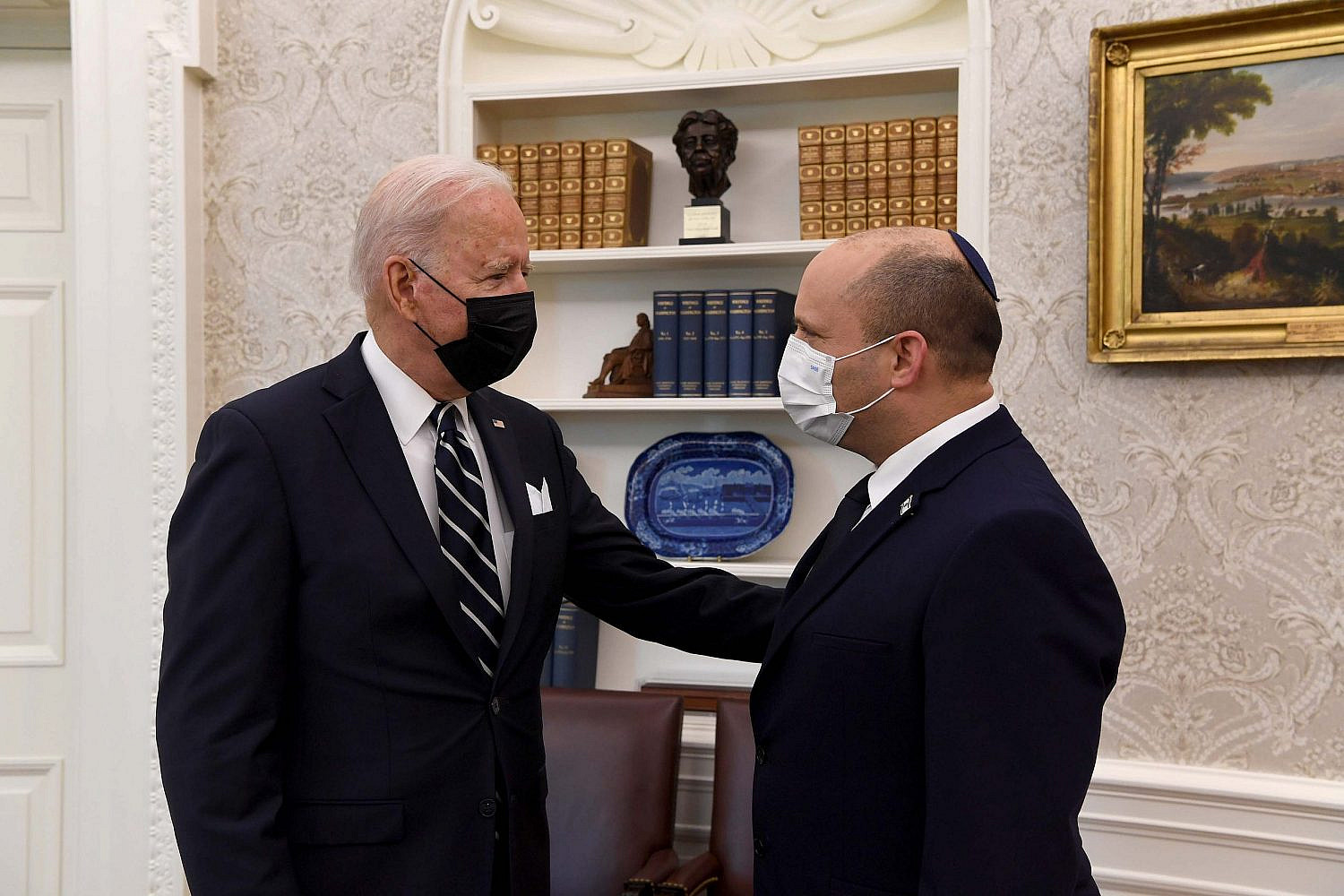
Since then, the issues of Sheikh Jarrah and Silwan, of E-1 and the Temple Mount/Haram al-Sharif have been high on the agenda of the international community. This, in turn, has engaged the Bennett-Lapid government at the highest echelon, and was even raised by Biden in his meeting with the prime minister. However, time after time, the Israeli leadership has politely informed international interlocutors that Jerusalem is an internal Israeli matter, and is none of their business.
“It’s not us, it’s him.” Until recently, the Bennett-Lapid government could reasonably assert that all of the disturbing developments of the past months are not of its making, but rather were inherited from the Netanyahu era. However, recent events, such as the declaration of Palestinian human rights organizations as “terrorist groups,” and the approval of the construction of thousands of new settlement units in the West Bank, are owned entirely by the new government.
Regardless, the increasingly aggressive policies in Jerusalem need no policy directives from the cabinet. Over the past decade, Netanyahu successfully spliced the ideology of perpetual occupation into the operative DNA of the Israeli state. The policeman at Damascus Gate needs no orders to beat up a Palestinian kid, nor does the Defense Ministry bureaucrat require a directive to expand settlements: they understand that the occupation is now a central component of Israel’s raison d’etre.
Changing these trends requires both awareness and a will to engage — neither of which have been displayed by the Bennett-Lapid coalition. The international community, meanwhile, has not yet displayed any ability to elicit a course correction from the new government.
“Don’t worry, we won’t do it.” In the weeks to come, we will likely hear senior members of the Bennett-Lapid government deliver lines such as: “Fear not, we will not evict anyone in Sheikh Jarrah, nor will we build in E-1.” They will be very convincing, but dead wrong. It is enough to have a coalition crisis, a new election, or a terror attack for the government to move forward with its plans. All it will take is two strokes of the pen — signatures on a dotted line by Defense Minister Benny Gantz — and E-1 would be approved, and the expulsions in Sheikh Jarrah can commence. There will be no trip wire, no advanced warning.
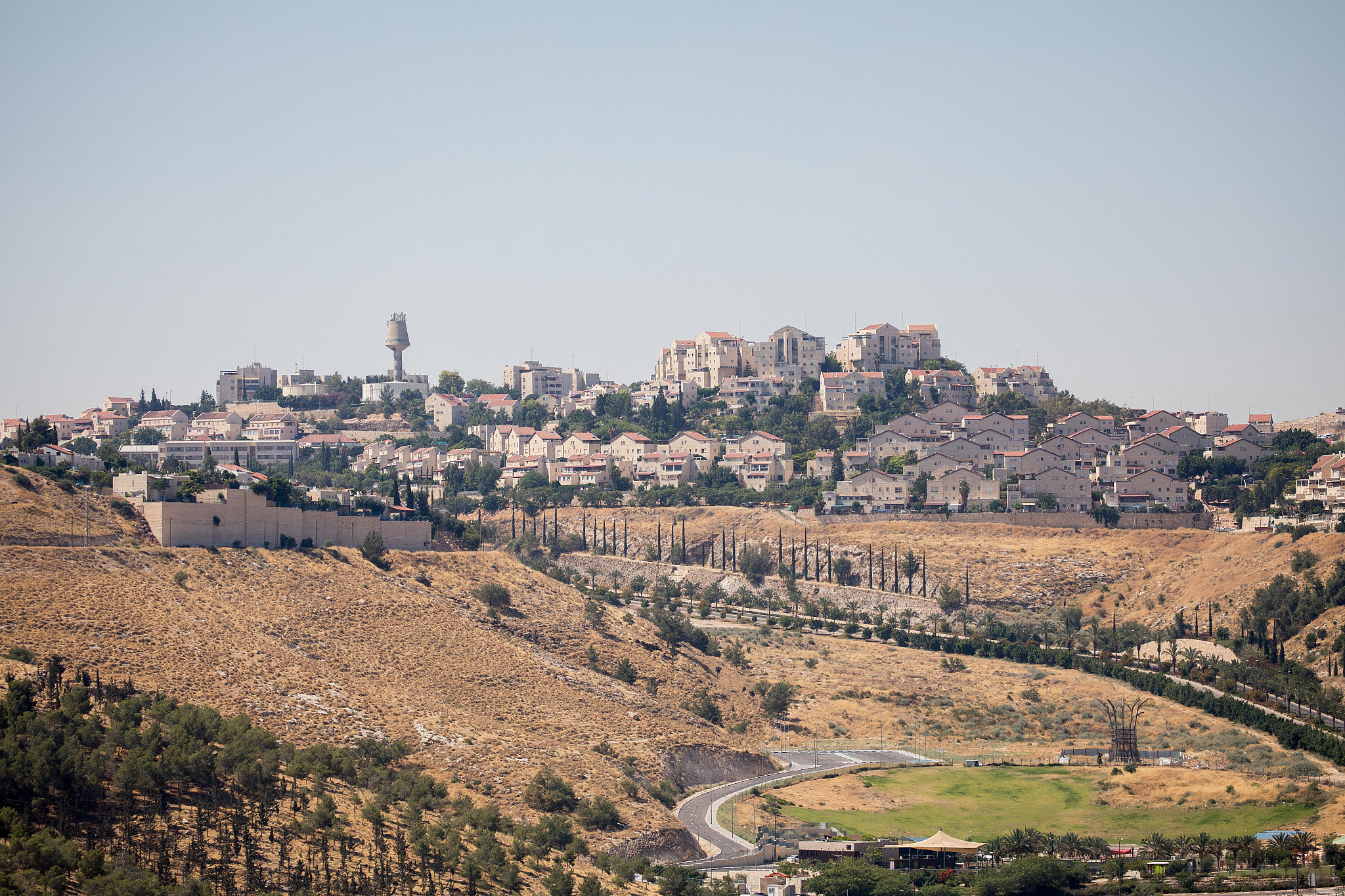
“Too weak to fail.” If investment banks argued during the 2008 financial crisis that they were “too big to fail,” the Bennett-Lapid government is pursuing a line of defense that argues “we’re too weak to fail.” If you push us to exhibit restraint, the thinking goes, the coalition will collapse, and you’ll be stuck once again with Netanyahu. There are two problems with this line of thinking: first, it has a good deal of merit and is difficult to argue with; and second, it effectively grants the Bennett-Lapid government a reusable “get out of jail free” card, providing ongoing immunity from accountability.
The scorched earth left by Trump and Netanyahu, the decades of failed policies that preceded them, a metastasizing occupation, and a dysfunctional Palestinian Authority all evoke the words of Italian Marxist philosopher Antonio Gramsci: “The old world is dying, and the new world struggles to be born: now is the time of monsters.” Jerusalem is not waiting for that new world to be born. And Jerusalem always has the last word.

